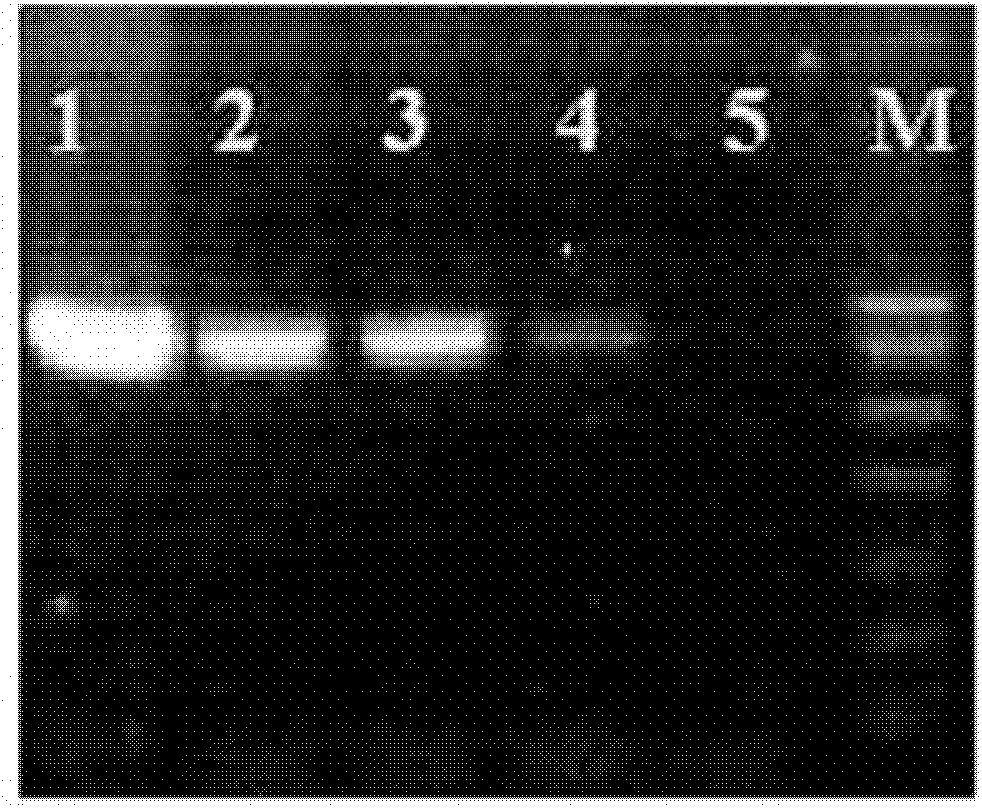Primer composition assisting identification of H9 subtype avian influenza virus and chicken infectious bronchitis virus and applications thereof
A technology for bronchitis and chicken infectivity, which is applied in the primer composition and application field of auxiliary identification of H9 subtype avian influenza virus and chicken infectious bronchitis virus. Carry out differential diagnosis, detect different objects and other problems, to achieve the effect of easy operation and application at the grassroots level, low cost and short time required
- Summary
- Abstract
- Description
- Claims
- Application Information
AI Technical Summary
Problems solved by technology
Method used
Image
Examples
Embodiment 1
[0032] Embodiment 1, the design of specific primer pair
[0033] Design a pair of primers for identifying the HA gene of the H9 subtype avian influenza virus as follows (name it as primer pair A):
[0034] H9-HA99F (Sequence 1 of the Sequence Listing): 5'-CATCGGCTACCAATCAACAAAC-3';
[0035] H9-HA571R (SEQ ID NO: 2 of the SEQUENCE LISTING): 5'-GATTATTTGTGTATTGGGCGTC-3'.
[0036] Design a pair of primers for identifying the N gene of chicken infectious bronchitis virus as follows (name it as primer pair B):
[0037] IB621F (Sequence 3 of the Sequence Listing): 5'-CAGGTAAAGGCGGAAGAAAAC-3;
[0038] IB1275R (SEQ ID NO: 4 of the SEQUENCE LISTING): 5'-TGAAGCCCATCTGGTTGAAG-3'.
Embodiment 2
[0039] Embodiment 2, the specific detection of primer pair
[0040] 1. Specificity detection of primer pair B
[0041] The experimental samples are: H4N6 subtype avian influenza virus, H3N8 subtype avian influenza virus, infectious laryngotracheitis virus, egg drop syndrome virus, Newcastle disease virus, chicken infectious bronchitis virus H120 strain and H9N2 subtype avian influenza Virus.
[0042] 1. Extract each sample to be tested (that is, the virus concentration is 10 6 EID 50 / 100 μL of virus fluid) and reverse transcribed into cDNA.
[0043] 2. Using the cDNA obtained in step 1 as a template, use primer pair B to perform PCR amplification to obtain a PCR amplification product.
[0044] PCR amplification reaction system (25 μl): 2×Mix Buffer 12.5 μl, IB621F 0.5 μl, IB1275R 0.5 μl, cDNA 2 μl, add double distilled water to 25 μl.
[0045] The reaction program of PCR amplification: 94°C for 5min; 94°C for 45s, 59°C for 45s, 72°C for 2min, 30 cycles; 72°C for 10min; 4...
Embodiment 3
[0054] Embodiment 3, the sensitivity detection of primer pair
[0055] 1. Sensitivity of primers to B
[0056] 1. Extract virus concentration to 10 5 EID 50 / 100μL, 10 4 EID 50 / 100μL, 10 3 EID 50 / 100μL, 10 2 EID 50 / 100μL or 10EID 50 / 100 μL of the total RNA of the virus liquid of chicken infectious bronchitis virus H120 strain (named as virus liquid A1, virus liquid B1, virus liquid C1, virus liquid D1 and virus liquid E1 according to the virus concentration from high to low) and reversed. Transcribed into cDNA.
[0057] 2. Using the cDNA obtained in step 1 as a template, use primer pair B to perform PCR amplification to obtain a PCR amplification product.
[0058] The reaction system of PCR amplification is the same as step 1 and 2 of embodiment 2.
[0059] The reaction procedure of PCR amplification is the same as Step 1 and 2 of Example 2.
[0060] 3. Perform 1% agarose gel electrophoresis on the PCR amplification product of step 2, see the electrophoresis ...
PUM
 Login to View More
Login to View More Abstract
Description
Claims
Application Information
 Login to View More
Login to View More - R&D
- Intellectual Property
- Life Sciences
- Materials
- Tech Scout
- Unparalleled Data Quality
- Higher Quality Content
- 60% Fewer Hallucinations
Browse by: Latest US Patents, China's latest patents, Technical Efficacy Thesaurus, Application Domain, Technology Topic, Popular Technical Reports.
© 2025 PatSnap. All rights reserved.Legal|Privacy policy|Modern Slavery Act Transparency Statement|Sitemap|About US| Contact US: help@patsnap.com



